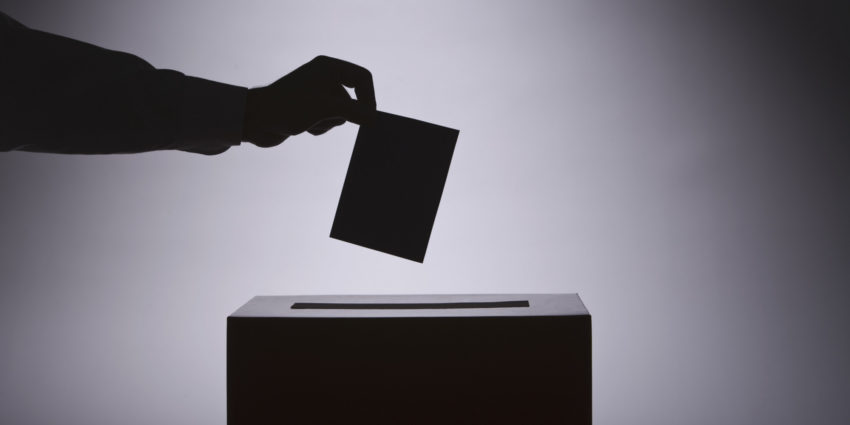In numerous liberal democracies a structural decline of electoral turnout has been observed since the 1980s, and this downward trend constitutes an important challenge for representative democracy. In Arend Lijphart’s words, “the democratic goal should be (…) universal or near-universal turnout”. Lower levels of turnout are problematic because they are often associated with unequal turnout, with as a result that some groups of citizens are less likely to be represented in the policy process. If lower turnout indeed implies more inequality, the decline of turnout rates across advanced democracies therefore should lead to more political inequality.
In our recent Politics article “Voter Turnout Decline and Stratification: Quasi Experimental and Comparative Evidence of a Growing Educational Gap” we examine this fundamental question and focus on inequalities in education.
The starting point of many studies on the relation between turnout rates and inequality is Herbert Tingsten’s “law of dispersion”. According to Tingsten, disparities in representation should become smaller as turnout increases. Under full turnout, there indeed cannot be inequalities in who participates and who does not. The reverse expectation, that disparities increase as turnout goes down, is however not self-evident, as it depends on the extent to which the decrease in turnout is distributed randomly across the population. Applied to educational attainment, the expectation that eroding turnout rates increase the educational gap is only valid if the lower educated are indeed more likely to drop out. As previous work offers only mixed evidence, we aim to gain further insights into this question by empirically analyzing the consequences of declining turnout rates. Since this is inherently a complex relation, we rely on different methods to investigate the relation between turnout and stratification. First, we investigate a single country-case, with a sharp and sudden decline of voter turnout: the Netherlands at the time of the abolition of compulsory voting. Second, we rely on data from six different countries to investigate trends over time.
Between 1917 and 1971, voting was compulsory in the Netherlands and the abolition of compulsory voting resulted in a sharp decrease in turnout rates. Analysing election survey data from 1967 (the last election before the change in electoral rules) and survey data from 1971 (the first legislative election under voluntary voting), we gain insights in which voters no longer participated. Our results show that both the lowest and highest educated groups had an estimated probability of 92% to report turning out to vote in 1967. In the 1971 elections, we note a significantly lower probability of turning out to vote for both groups. This decline, however, is much more pronounced for the lowest educated group (their probability of voting is 77% while that of the highest educated is 85%). The transition to voluntary voting hence implied that especially the lowest educational groups have dropped out of electoral participation. To express it differently: as result of the abolishment of compulsory voting the electoral weight of the highest educated group grows stronger.
For investigating the over-time evolution of inequalities in electoral participation, we make use of survey data that cover an extended period of time. Such data are available for Denmark, Germany, Great Britain, the Netherlands, Norway and Sweden, which are six countries with a long tradition of national election survey research. We observe a negative trend in electoral participation in all six countries, though the strength of the decline varies from country to country. The decline in turnout is weakest in Denmark and Sweden. If lower turnout rates imply stronger inequalities in turnout, the effect of educational attainment on turnout should become more pronounced over time – in particular in those countries where turnout rates declined strongly (Germany, Norway, the Netherlands and the United States). To investigate whether this is indeed the case, we estimate multivariate models and focus on the interaction between time and respondents’ level of education. Our results offer indications of the gap in electoral participation between low- and high-educated citizens growing wider over time, and most strongly so in countries where turnout levels have declined more strongly. That is, the increase in the impact of education level on turnout is only significant at conventional level of statistical significance in Germany, The Netherlands, Norway and the United States. The evidence is weakest for the Danish and Swedish contexts, which is not surprising, given the limited decline of turnout rates in these two countries.
Our findings indicate that the declining turnout rates across advanced democracies are associated with a growing gap between who turns out and who does not. This increasing impact of educational attainment on turnout reaches statistical significance only in countries where the decline in electoral participation is strongest. The implication is that as turnout rates continue to decline in advanced democracies, disparities could become significantly more pronounced in a growing number of countries. As especially the lower educated groups in society are increasingly dropping out of electoral participation, there is a clear risk that electoral results are less and less representative of public opinion at large. One of the risks of the observed decline in voter turnout, therefore is that especially the political preferences of the lower educated groups in society are not well represented in the political decision-making process.

